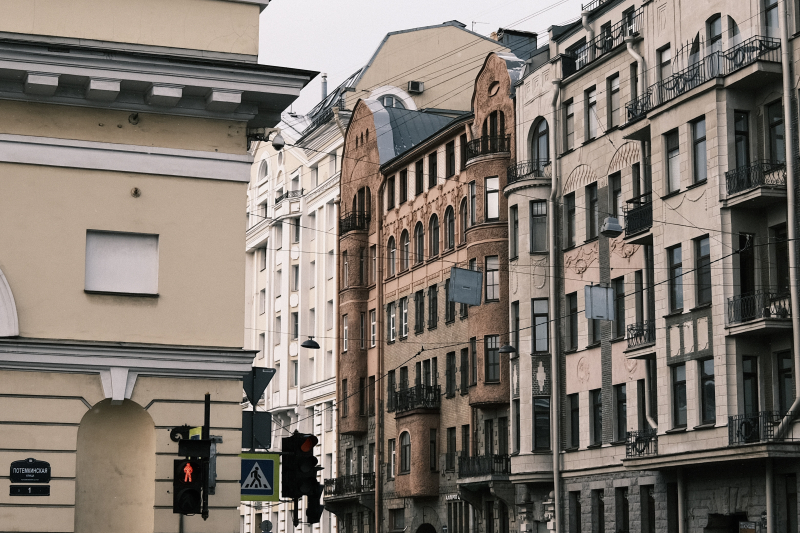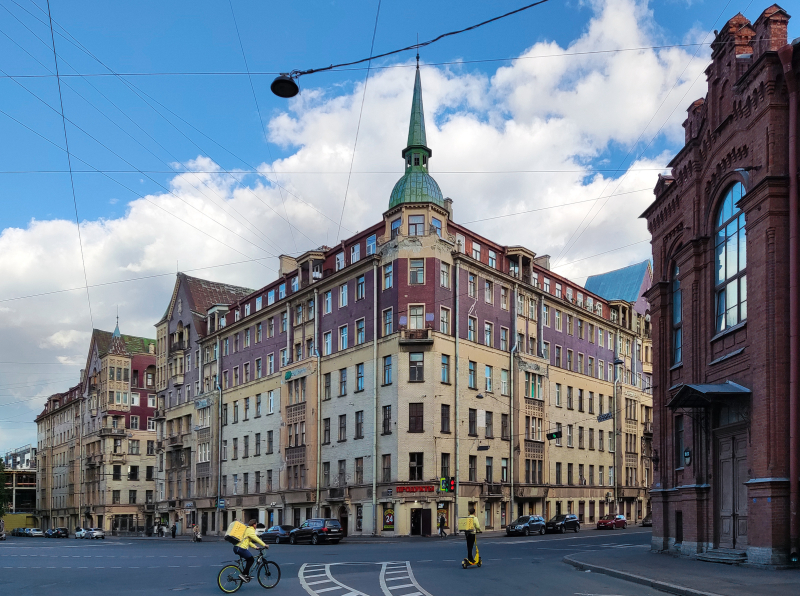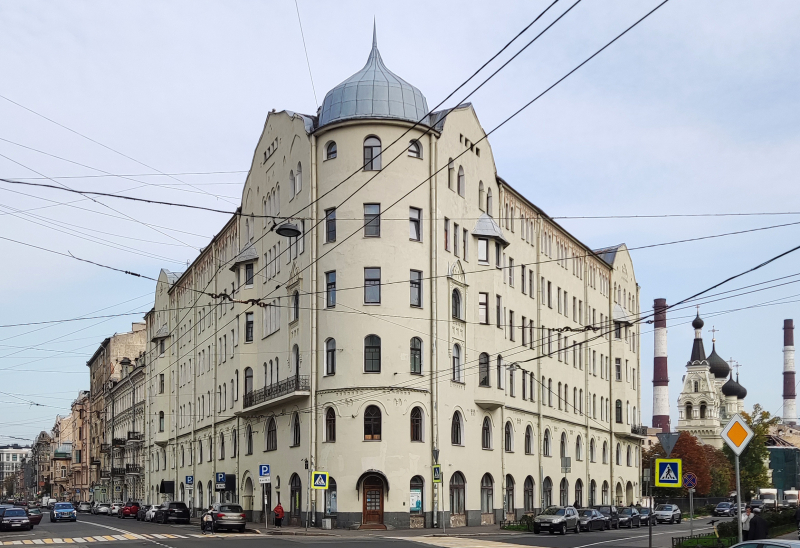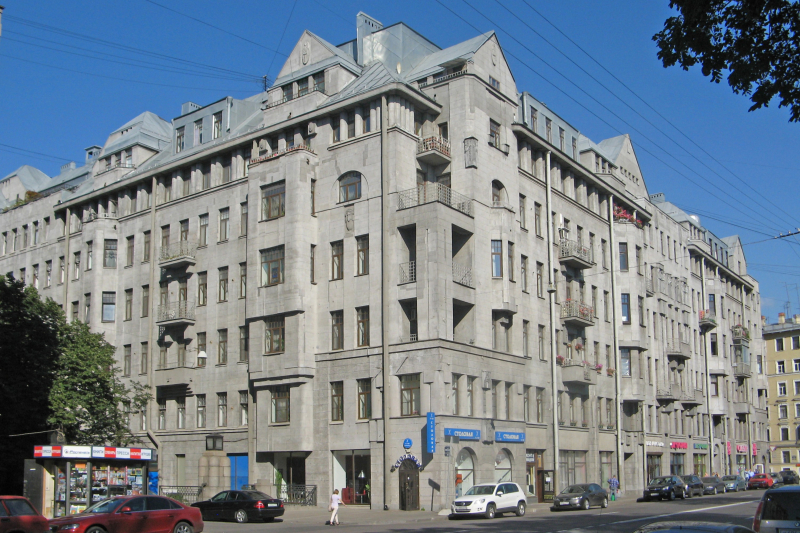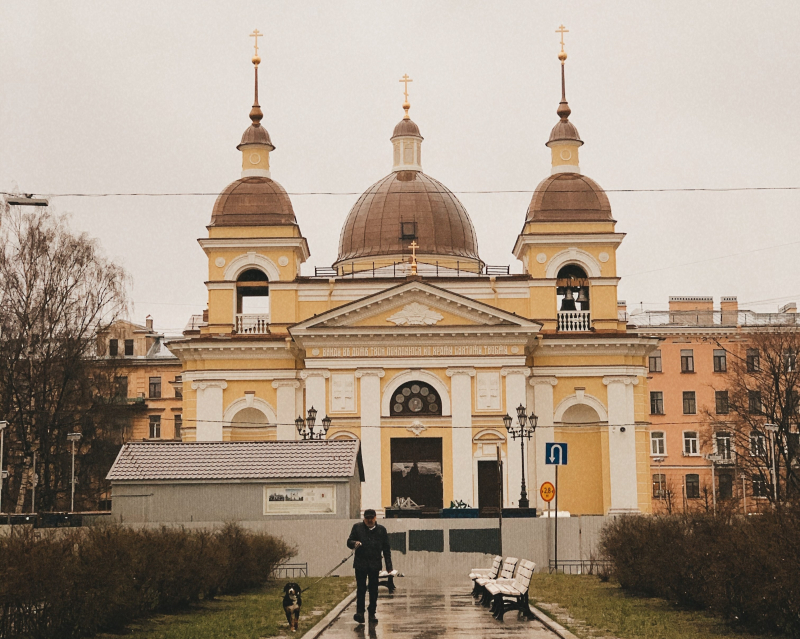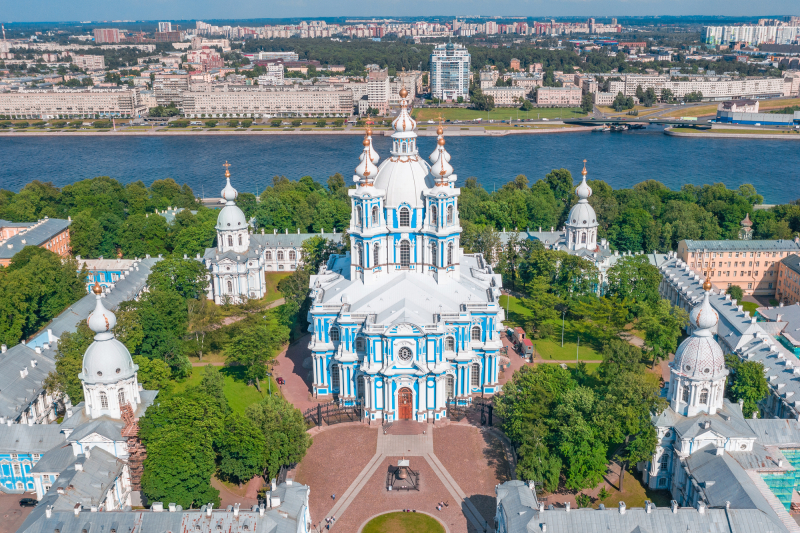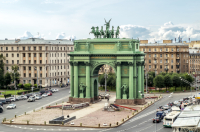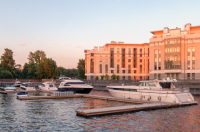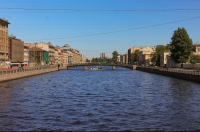Peski is a historical district just a couple of blocks away from Nevsky Prospect, formed by the Sovetskie streets (there are 10 of them!), as well as the Mytninskaya and Degtyarnaya streets and the Suvorovsky, Grechesky, and Ligovsky prospekts that intersect them. Its name, Пески, meaning “sands” in Russian, can be interpreted quite literally: once, there was a sandy ridge here, a remnant of an ancient sea. This unique feature made it the highest point in the city, protecting it from the devastating floods that plagued St. Petersburg in the past.
A heaven for revenue houses
Initially inhabited by military personnel and craftsmen, Peski underwent a transformation in the early 20th century, when it became a hub for revenue houses – a type of accommodation built specifically for rent. The owners spared no expense in showcasing their wealth and taste through extravagant and daring designs. Here are only three of many examples, built in the same decade and style, yet completely different in spirits:
-
The house of the merchant Polezhaev (unfortunately, currently hidden due to renovation), with its two standout towers and lavish decorations, resembles a medieval castle. It's no wonder that this impressive building has been featured in several movies, including an adaptation of The Master and Margarita, even though the plot takes place in Moscow.
-
The nearby revenue house of Pavel Stanovoy has a fairy tale-like appearance, thanks to the pinch of the Neo-Russian style. The architecture echoes folklore, with the roof on the corner resembling a helmet, and the windows on the second floor taking the shape of a kokoshnik.
-
The brutal gray residential buildings of the Basseinoe partnership comprise eight edifices, taking up the whole block. Some say this is the only building in St. Petersburg with Assyrian motifs in its decor: warriors, priestesses, and exotic birds.
Cathedrals large and small
Of course, the Sovetskie (Soviet) streets now bear unoriginal names, but before that, they were known as Rozhdestvenskiye (from Russian for “Christmas”), named after the nearby Church of the Nativity of Christ. The original church was small and made of wood, but in the late 18th century it was rebuilt in stone. Sadly, the church was eventually demolished in the 1930s. However, it has since been restored, allowing us to appreciate this specimen of Classical architecture carefully surrounded by the perfectly aligned streets.
A bolder example is the Smolny Cathedral, which serves as the focal point not only of its neighborhood but of the entire city. The cathedral's stunning blue and white façade is embellished with ornate Baroque features. Visitors can stroll through the garden, explore the interior, or even ascend the bell tower for a bird's-eye view of St. Petersburg.
Embrace modernity
It may now seem that the district has become a time capsule of the Russian imperial legacy. In fact, there’s a massive modern block right in the heart of it. The Nevskaya Town Hall is a sleek office space for the city’s administrative workers that exudes a contemporary atmosphere with its use of glass, stone, and ample space. The impressive edifice is particularly striking from afar, with its dome resembling a mysterious black UFO.
Coffee and sweets

Credit: Karl Fredrickson (@kfred) via Unsplash
When the eyes are satisfied, it’s time to grab a bite. Peski is no gastro hub, but there are at least three gems local foodies would appreciate. For example, it is in this district that the Doris Local coffee shop is located. If you haven’t tried their legendary cheesecake yet, the walk may be a great chance to fix that. Another feast for the sweet tooth is Cafe Italia, which we’ve already mentioned among the best ice cream spots in the city. And if you prefer a minimalist design paired with your coffee, Mad Espresso Team is sure to warm your heart.
Want to explore other districts like a local? Follow our tag Unexplored St. Petersburg for more gems.
